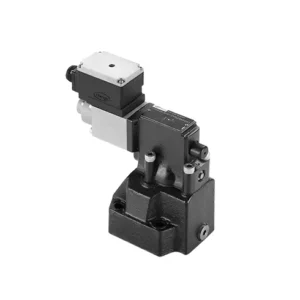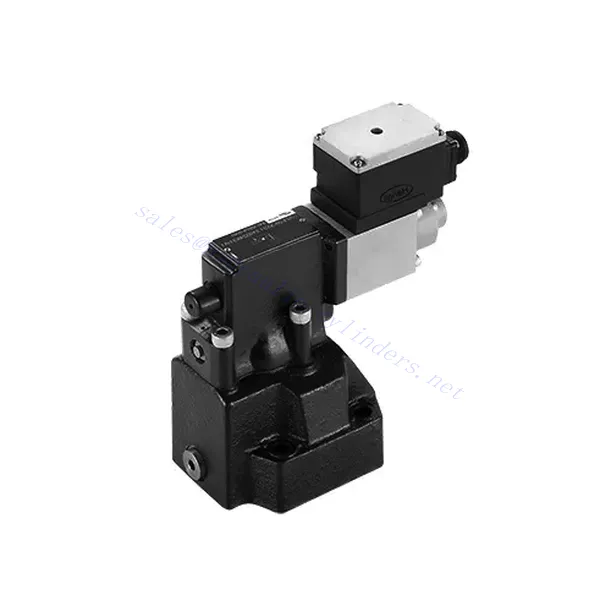DRE(E) Series Proportional Pressure Reducing Hydraulic Valve
Являясь одним из производителей, поставщиков и экспортеров механической продукции, мы предлагаем гидравлические цилиндры и многие другие изделия.
Пожалуйста, свяжитесь с нами для получения подробной информации.
Почта:sales@hydraulic-cylinders.net
Производитель поставщик экспортер гидроцилиндров.
DRE(E) Series Proportional Pressure Reducing Hydraulic Valve

The DRE(E) series proportional pressure-reducing hydraulic valve is a cutting-edge hydraulic component that provides precise pressure control in hydraulic systems. With its advanced proportional control technology, this valve ensures optimal performance, efficiency, and safety.
The DRE(E) series proportional pressure-reducing hydraulic valve empowers hydraulic systems with precise pressure control, enhanced efficiency, and equipment protection. With its advanced proportional control technology, this valve ensures optimal performance across various applications. By following the recommended usage methods and maintenance guidelines, you can maximize the benefits and reliability of the DRE(E) series valve, elevating the pressure control and overall performance of your hydraulic system. Upgrade your hydraulic setup today and experience superior pressure regulation with the DRE(E) series proportional pressure-reducing hydraulic valve.
DRE(E) Series Proportional Pressure Reducing Hydraulic Valve Key Characteristics:
- Proportional Pressure Reduction:
- The DRE(E) series valve offers precise and proportional pressure reduction, enabling dynamic hydraulic pressure control.
- It ensures accurate pressure regulation, maintaining a consistent and safe pressure level within the hydraulic system.
- Enhanced System Efficiency:
- This valve enables precise hydraulic pressure control, resulting in enhanced system efficiency and reduced energy consumption.
- By maintaining the desired pressure levels, it minimizes pressure fluctuations, optimizes system performance, and lowers operational costs.
- Safety and Equipment Protection:
- The DRE(E) series valve acts as a protective mechanism by limiting the pressure within the hydraulic system, safeguarding equipment and operators.
- It prevents excessive pressure build-up, reducing the risk of component damage, system failures, and potential accidents.
- Proportional Control Functionality:
- With its proportional control technology, the DRE(E) series valve offers smooth and precise pressure adjustment.
- It allows for real-time pressure control, enabling seamless integration into various hydraulic systems and applications.
DRE(E) Series Proportional Pressure Reducing Hydraulic Valve Parameter:
| General | ||||
| Fluid | Mineral oil suitable for NBR and FKM seal | |||
| Phosphate ester for FKM seal | ||||
| Fluid temperature range | ℃ | -30 to +80 (NBR seals) | ||
| -20 to +80 (FKM seals) | ||||
| Viscosity range | mm2/s | 2.8 to 380 | ||
| Degree of contamination | Maximum permissible degree of fluid contamination: Class 9. NAS 1638 or 20/18/15, ISO4406 | |||
| Max. operating pressure | 315 bar | |||
| Port A、B、X | bar | 50; 100; 200; 315 | ||
| Max. setting pressure | bar | In relation to Flow (Q), see characteristic curves | ||
| Min. settable pressure | =Min. settable pressure | |||
| Min. settable pressure at 0 command value | Separate and at zero pressure to tanks | |||
| Return oil pressure port Y | bar | Setting pressure | Pressure range under Max. safety pressure | |
| Max. pressure safety (infinitely adjustable) | 50 bar | 10-60+20 bar | ||
| 100 bar | 10-120+20 bar | |||
| 200 bar | 10-220+20 bar | |||
| 315 bar | 10-340+20 bar | |||
| Max. pressure safety setting condition | When rated pressure is 50 bar, between 60 bar and 80 bar | |||
| When rated pressure is 100 bar, between120 bar and 140 bar | ||||
| When rated pressure is 200 bar, between 220 bar and 240 bar | ||||
| When rated pressure is 315 bar, between 340 bar and 360 bar | ||||
| Size | 10 | 25 | 32 | |
| Max. flow-rate | 200 | 400 | 600 | |
| Pilot oil (for pilot valve)) | L/min | 0.7 to 2 | ||
| Linearity | L/min | ±3.5% | ||
| Repeatability | <±2% | |||
| Hysteresis | with shimmy | without shimmy | ||
| ±1.5% P max (200Hz, amplitude 200mAsss) | ±4.5% P max | |||
| Switching time | 30~150ms(independent with the system) | |||
| Electrical data | ||||
| Power | DC | |||
| Min. solenoid current | mA | 100 | ||
| Max. solenoid current | mA | 800 | ||
| Coil resistance | 19.5Ω at 20℃, Max. warm value: 28.8Ω | |||
| Working status | Continuous | |||
| Max. Ambient temperature range | +50℃ | |||
| Electrical connection | Plug-in connector to DIN 43 650/2 +SL/PG11 | |||
| Insulation to DIN 40 050 | IP 65 | |||
| Amplifier | VT2000 | |||
DRE(E) Series Proportional Pressure Reducing Hydraulic Valve Advantages:
• Used for bottom sub-plate mounting
• Installation face follow DIN24340 E and ISO 6264
• Used in oil path block installation
• Four pressure ranges
• Highest pressure protection structure (optional)
• Matching electronic amplifier VT-2000 type (must be ordered separately)
Usage Method Of DRE(E) Series Proportional Pressure Reducing Hydraulic Valve:
- System Evaluation:
- Evaluate your hydraulic system and identify the specific pressure control requirements.
- Determine if the DRE(E) series valve is compatible with your system based on its pressure range, flow capacity, and other specifications.
- Valve Selection:
- Choose the appropriate DRE(E) series valve variant based on your system parameters, pressure range, and flow requirements.
- Consider maximum pressure rating, response time, and operational conditions.
- Installation:
- Follow the manufacturer’s installation instructions carefully, ensuring proper alignment and secure valve mounting.
- Connect the valve to the hydraulic system, ensuring leak-free connections and proper flow direction alignment.
- Pressure Adjustment:
- Utilize the proportional control signal or adjustment mechanism provided with the DRE(E) series valve to set the desired pressure reduction level.
- Adjust the valve incrementally, monitoring the pressure gauge readings and system response to achieve precise pressure control.
How To Adjust Hydraulic Pressure Relief Valve?
Adjusting a hydraulic pressure relief valve allows you to regulate the maximum pressure within a hydraulic system. This is important for maintaining system integrity and preventing damage to components. Here’s a step-by-step guide on how to adjust a hydraulic pressure relief valve:
- Identify the Pressure Relief Valve:
- Locate the hydraulic pressure relief valve in your system. It is typically positioned in the hydraulic line or integrated into a manifold block.
- Understand the Valve Design:
- Familiarize yourself with the specific design of the pressure relief valve you are working with. Different valves may have varying adjustment mechanisms, such as a knob, screw, or locknut.
- Determine the Desired Pressure Setting:
- Assess the requirements of your hydraulic system and determine the desired maximum pressure. Consider the system’s specifications, load conditions, and safety limits.
- Prepare the System:
- Before making any adjustments, shut off the hydraulic system and relieve the pressure by moving the control levers back and forth or following the manufacturer’s recommended procedure.
- Locate the Adjustment Mechanism:
- Identify the adjustment mechanism on the pressure relief valve. It could be a knob, screw, or locknut positioned on the valve body or adjacent to it.
- Adjust the Valve:
- If the valve has a knob or handle, turn it clockwise to increase the pressure relief setting or counterclockwise to decrease it. If the valve has a screw, turn it clockwise to increase the ground or counterclockwise to drop it.
- Make Incremental Adjustments:
- When adjusting the pressure relief valve, make small, incremental changes to avoid sudden or drastic variations in pressure. This allows you to fine-tune the system and prevent potential damage.
- Observe the System:
- With each adjustment, observe the hydraulic system’s pressure gauge or indicator to see the effect of the changes. Ensure that the pressure stays within the desired range.
- Test and Verify:
- Gradually increase the system’s pressure and monitor the pressure relief valve’s response. Ensure it relieves stress when the maximum set pressure is reached and maintains the desired maximum pressure.
- Lock the Adjustment:
- Once you have achieved the desired pressure setting, secure the adjustment mechanism to prevent unintended changes. Some valves may have a locking nut or set screw that can be tightened to hold the adjustment in place.
- Document the Adjustment:
- Keep a record of the adjusted pressure relief setting for future reference and maintenance purposes. This documentation will help maintain consistency and aid troubleshooting efforts.
Возможности и мощности завода:
(1) Сборка
Мы располагаем первоклассной независимой сборочной платформой для проведения исследований и разработок. Цех по производству гидравлических цилиндров имеет четыре полуавтоматические линии сборки подъемных цилиндров и одну автоматическую линию сборки цилиндров наклона с проектной годовой производственной мощностью 1 млн. штук. Цех по производству специальных цилиндров оснащен полуавтоматической очистной сборочной системой различных спецификаций с проектной годовой производственной мощностью 200 тыс. штук и оснащен известным обрабатывающим оборудованием с ЧПУ, обрабатывающим центром, высокоточным специальным оборудованием для обработки цилиндров, роботом-сварщиком, автоматической очистной машиной, автоматической сборочной машиной цилиндров и автоматической покрасочной производственной линией. Существующее критически важное оборудование насчитывает более 300 комплектов (комплектов). Оптимальное распределение и эффективное использование ресурсов оборудования позволяет обеспечить требования к точности изделий и удовлетворить потребности в высоком качестве продукции.


(2) Механическая обработка
Цех оснащен специализированным токарным центром с наклонной направляющей, обрабатывающим центром, высокоскоростным хонинговальным станком, сварочным роботом и другим сопутствующим оборудованием, которое позволяет обрабатывать цилиндрические трубы с максимальным внутренним диаметром 400 мм и максимальной длиной 6 м.

(3) Сварка

(4) Painting & coating
With small and medium-sized cylinder automatic water-based paint coating lines, to achieve automatic robot loading and unloading and automatic spraying, the design capacity of 4000 pieces per shift;
We also have a semi-automatic paint production line for large cylinders powered by a power chain, with 60 cases per shift design capacity.


(5) Testing
We have first-class inspection facilities and test beds to ensure that the performance of the cylinder meets the requirements.

We are one of the best hydraulic cylinder manufacturers. We can offer comprehensive hydraulic cylinders. We also provide corresponding agricultural gearboxes. We have exported our products to clients worldwide and earned a good reputation because of our superior product quality and after-sales service. We welcome customers at home and abroad to contact us to negotiate business, exchange information, and cooperate with us!
Take a Tour of Our VR Factory:
Take a tour of our VR factory with the following
Hydraulic Cylinder Application:


